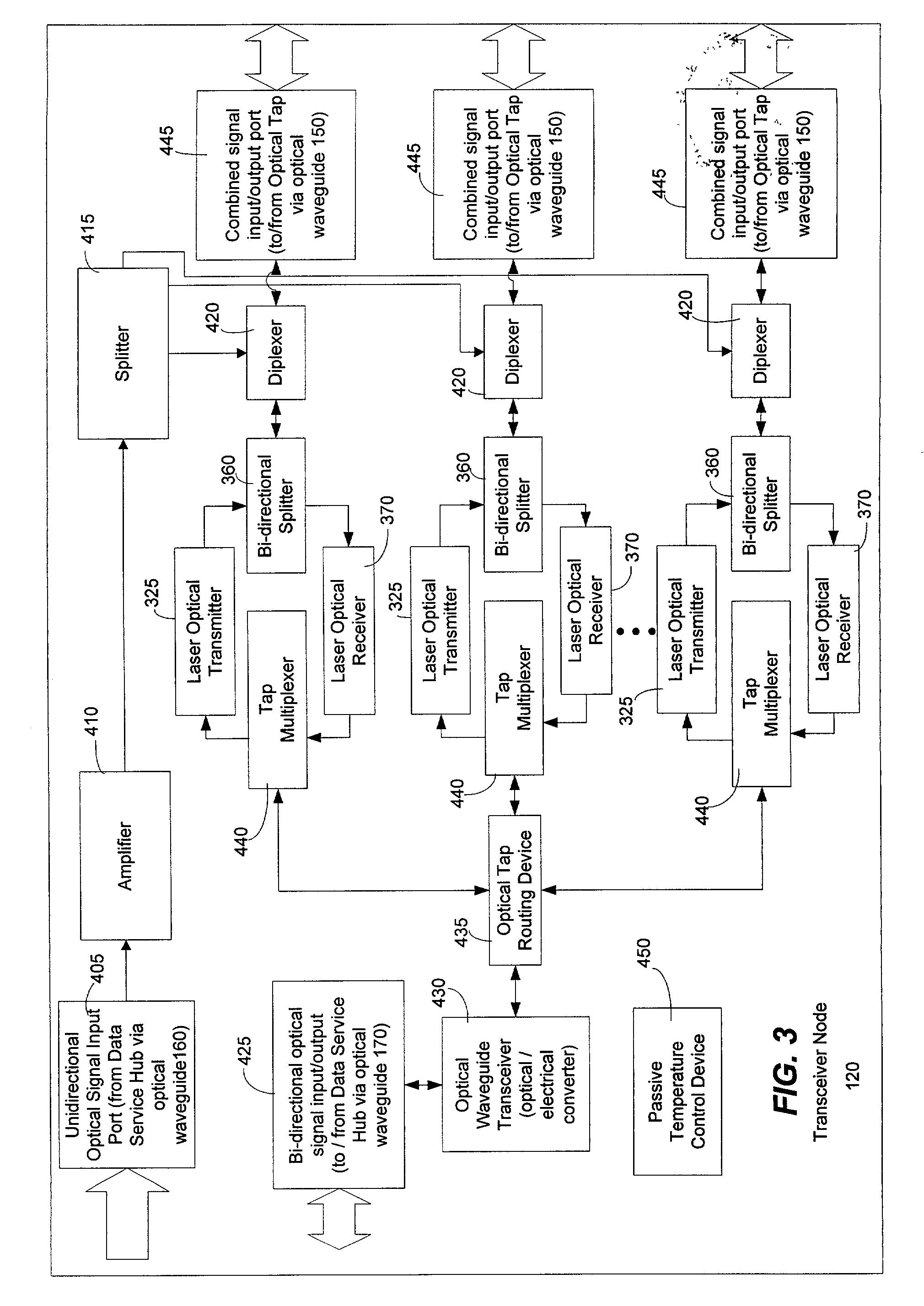Method and system for processing upstream packets of an optical network
- Summary
- Abstract
- Description
- Claims
- Application Information
AI Technical Summary
Benefits of technology
Problems solved by technology
Method used
Image
Examples
Embodiment Construction
[0046] The present invention may be embodied in software or hardware or a combination thereof disposed within an optical network. The present invention can comprise a transceiver node that further comprises an optical tap routing device and a plurality of optical tap multiplexers for receiving upstream packets from one or more subscriber optical interfaces. Unlike conventional token bucket emulation that handles data packets in a single manner, the protocol of the present invention can process aggregates of data packets with token bucket emulation. With the protocol of the present invention, a transceiver node can allocate additional or reduced upstream bandwidth based upon the demand of one or more subscribers. The present invention can monitor and adjust a subscriber's upstream bandwidth on a subscription basis or on an as-needed basis. The present invention can permit each subscriber of a subscriber group to have a guaranteed bandwidth. However, most portions of guaranteed bandwi...
PUM
 Login to View More
Login to View More Abstract
Description
Claims
Application Information
 Login to View More
Login to View More - R&D
- Intellectual Property
- Life Sciences
- Materials
- Tech Scout
- Unparalleled Data Quality
- Higher Quality Content
- 60% Fewer Hallucinations
Browse by: Latest US Patents, China's latest patents, Technical Efficacy Thesaurus, Application Domain, Technology Topic, Popular Technical Reports.
© 2025 PatSnap. All rights reserved.Legal|Privacy policy|Modern Slavery Act Transparency Statement|Sitemap|About US| Contact US: help@patsnap.com



